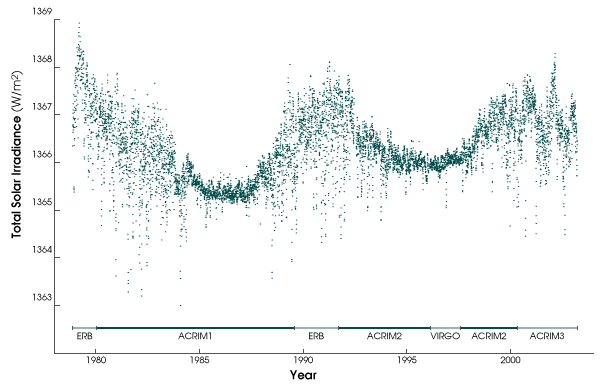The sun's solar cycle and energy output
Solar activity is
modulated by the approximate 11 year solar cycle. During more active cycles, more
intense output of radiation and solar winds, phenomenon such as
sun spots (magnetic
storms), flares and faculae (bright convective hot spots) are
more prominent/frequent on the sun's surface. A long term
change/trend in the solar cycle could have significant affects
on the Earth's climate.

The figure above shows the recording of the solar irradiance from
satellites since the late 1970s. The solar cycle can be clearly seen in
this timeseries. According to IPCC Assessment (2007), there are no
significant trends found in the satellite datasets showing either an
increase or decrease in the sun's overall activity. However, climate
model simulations and solar irradiance reconstructions (as far back as
1600) do show slight increases in solar irradiance and activity. The
general consensus in the science community though, is that anthropogenic
activity is the dominant force driving climate change.
What effect could a change in solar output of 1% per
century have on the Earth's climate?
